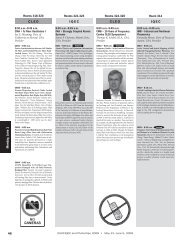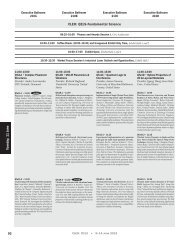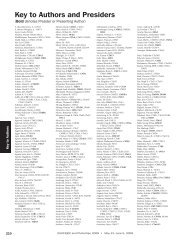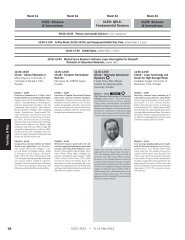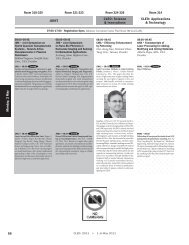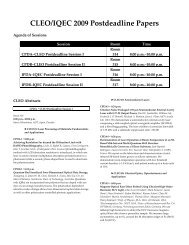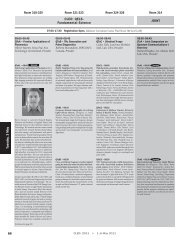CLEO/QELS 2008
CLEO/QELS 2008
CLEO/QELS 2008
You also want an ePaper? Increase the reach of your titles
YUMPU automatically turns print PDFs into web optimized ePapers that Google loves.
Biography: David Reitze received a B.A. in physics from Northwestern University in 1983 and<br />
a Ph.D. in physics from The University of Texas at Austin in 1990 working in the area of<br />
femtosecond spectroscopy. After positions at Bellcore and Lawrence Livermore National<br />
Laboratory working on the development of high intensity ultrafast lasers and pulse shaping<br />
techniques, he joined the University of Florida where he currently holds the rank of Professor of<br />
Physics. In 1996, he began working on the development of large-scale gravitational wave<br />
interferometers with the LIGO Project. He led the design effort for the Input Optics, one of the<br />
major subsystems of the LIGO interferometers. He is currently the Spokesperson of the LIGO<br />
Scientific Collaboration, overseeing a group of 600 scientists worldwide engaged in the search<br />
for gravitational waves. He is a Fellow of the American Physical Society and a member of the<br />
Science and Engineering Council of the Optical Society of America.<br />
Audio Presentation<br />
Date: Wednesday, May 7, <strong>2008</strong><br />
Albert Polman<br />
Director<br />
Center for Nanophotonics,<br />
FOM-Institute AMOLF, Netherlands<br />
Plasmonics: Optics at the Nanoscale<br />
Abstract: The generation, concentration and dispersion of surface plasmons in thin metal films,<br />
nanoresonators and metal particle arrays is to be presented. The unique dispersion and mode<br />
confinement characteristics of these structures enables control of light at the true nanoscale.<br />
Biography: Albert Polman obtained his Ph.D. from the University of Utrecht, The Netherlands,<br />
in 1989. He was a post-doctoral researcher at AT&T Bell Laboratories until 1991 and then<br />
became group leader at the FOM-Institute for Atomic and Molecular Physics (AMOLF) in<br />
Amsterdam, The Netherlands. In 2003 he spent a sabbatical year at CALTECH. Since 2005 he<br />
also serves as director of AMOLF. Polman is associated with the University of Utrecht as a<br />
professor of nanophotonics. His research interests are energy transfer in photonic nanostructures,<br />
plasmonics, microcavities, rare earth ions, silicon nanostructures and photovoltaics. Polman<br />
specializes in studies at the interface between optical physics and materials science, and has<br />
regularly demonstrated transfer of knowledge to applied concepts.



